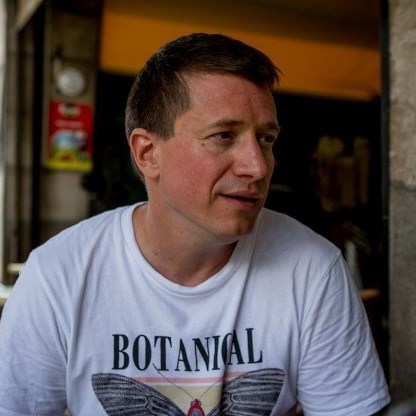The paranoid white supremacist ideology behind the Christchurch terrorist attack is the same that is used to legitimise the anti-migrant policies of the Hungarian government.
The far-right terrorist who killed 51 people in a Christchurch mosque in 2019 was sentenced to life in prison with no chance of parole on Thursday. I remember the shock I felt when I was reading the news about the terrible attack two years ago. Not only because of the unbelievable cruelty of the attack, live streamed on Facebook. As a Hungarian, it was a chilling experience to discover that the name of one of our national heroes, John Hunyadi, was painted on the semi-automatic weapon of the terrorist.
Hunyadi was a nobleman who fought the Ottoman Empire in the 15th century and stopped their expansion at the siege of Nándorfehérvár in 1456. With (ab)using his name, the terrorist declared himself the heir of Hunyadi, a hero fighting Muslim expansion and protecting Christian Europe today.
It is not accidental that this terrorist visited Hungary and other Central European countries right before he travelled to New Zealand to commit his heinous crimes. Even if we don’t know whether he met anybody here who was directly helping him in preparing the attack, we know that his lunatic, extremist ideas are regularly featured in the pro-government press. For example, identifying innocent, unarmed people, many of whom escaped from political oppression, with medieval conquerors. And abusing historical figures, like Hunyadi, to legitimise anti-Muslim and anti-Migrant bigotry.
Just a few weeks ago, on July 22, secretary of the Ministry of Defence Szilard Nemeth, said at an official ceremony that “the situation is the same today as it was in the days of Hunyadi.” He emphasised that Central-European nations should protect Christian Europe from migrants, just like Hunyadi protected it from the Ottoman conquerors.
On the day of the attack, the Christchurch terrorist published a manifesto on social media, entitled “The Great Replacement”, reflecting the paranoid ideas of the European far right movements – and the official propaganda of the Orban-government. The term was coined by Renaud Camus, a French white supremacist, who developed a conspiracy theory suggesting that Muslims are invading Europe, orchestrated by international financial circles, with the hidden agenda of replacing the white European population. Opinion leaders in the pro-government press in Hungary speak highly about Camus who sent his congratulations to Orban for his reelection as prime minister in 2018. His idea about the great replacement conspiracy often comes back in the speeches and articles of government politicians.
Just a few days before the terrorist attack, the president of the Hungarian Parliament, László Kövér, a prominent government idologue pointed out in a speech that “Europe is doomed to submission and exploitation” by a globalist elite that wages a new war to destroy “the natural identity” of European communities. All institutions that protect this “natural identity”, families, churches and the state, are under constant “mental attacks”.
In his speech on 5th September, 2019, prime minister Viktor Orban himself said at the 3rd Demographic Summit in Budapest that “if we accept the fact that Europe will be populated by non-Europeans, if we consider this natural, we contribute to the population replacement, we contribute to the process of replacing the European population.”
The fear of the extinction of the white Christian European nations always comes together with the obsession with birth rates. The manifesto of the Christchurch terrorist starts with repeating the term birth rates three times. For him killing Muslims and giving birth to white European children are different sides of the same coin: part of the same demographic struggle. Mr. Orban shares this fixation with birth rates; in the same speech, he declared increasing the number of Hungarian babies a top government priority. (Of course only if the babies are white and Christian: the Hungarian government’s family-support policies strongly favor middle class and wealthy parents, Roma families living in segregation and poverty are excluded.)
There is no reason to believe that Orban himself approves the methods of the Christchurch terrorist. He condemned the attack and sent his condolences to the people of New Zealand. It is telling that the prime minister’s favourite journalist, Zsolt Bayer, came up with a conspiracy theory on his blog claiming that the whole Christchurch attack was organised by Western secret services to undermine Orban’s performance at the upcoming European Parliament elections. This is a desperate effort to explain away the obvious similarities between Orban’s and the terrorist’s worldview.
When you start believing that your country is under siege, if you think that your nation faces extinction, if you regard migrants as occupiers – that sounds like a terrible danger to your community. What would you do to avert the danger and protect your people from it?
It was far from surprising to see how many of my fellow countrymen cheer and welcome the attack against the mosque on social media. “It was time that someone hit back.” “This is the way to fight Muslims.” “This is the time of revenge … someone should throw out the garbage.” “At least there are still some heroes.” These comments may not represent the majority view – but they are not the opinion of an isolated minority of extremists either. Hungarians can openly express their hatred against Muslims on social media without the fear of being ostracised. After all, isn’t it the official government position they hear and see every day that Europe is under siege by mass migration, organised by the sinister globalist clique of Mr. Soros?

Péter Sárosi
Executive Director of the Rights Reporter Foundation.
He is a historian, a human rights activist and drug policy expert, the founder and editor of the Drugreporter website since 2004, a documentary film maker and blogger. He has been working for the Hungarian Civil Liberties Union (HCLU) for more than 10 years. Now he leads the Rights Reporter Foundation.
Picture: Reuters, illustration: István Gábor Takács

